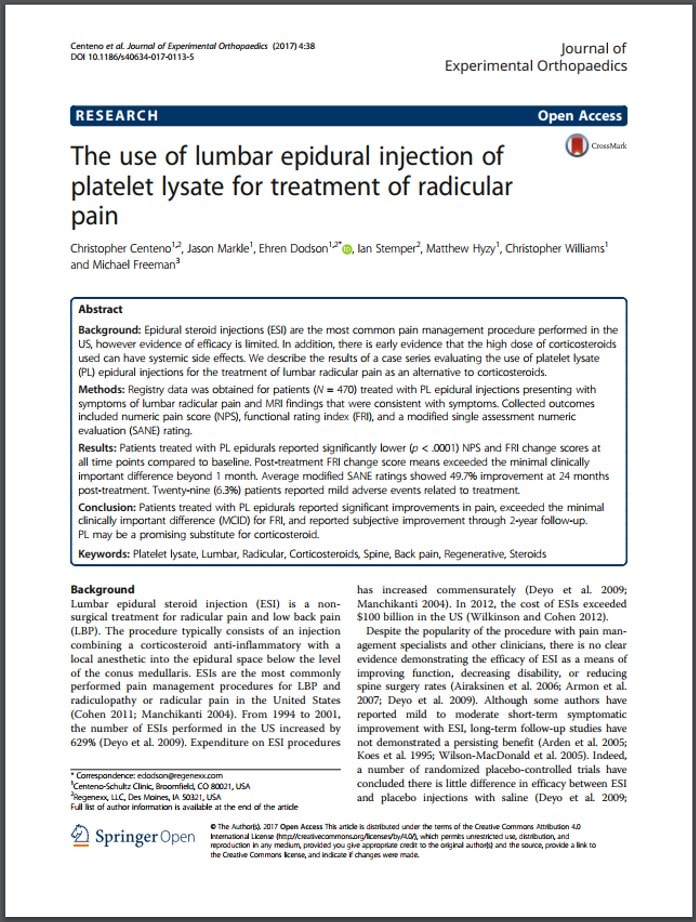New Regenexx Research Paper: Leading Rather than Following
How do you lead the exploding orthopedic regenerative-medicine space? You do what few other practitioners do: you publish your results on a regular basis. That’s what we do several times a year, and this morning I’d like you to introduce you to our latest peer-reviewed publication on the use of platelet lysate injected epidurally to treat irritated low-back nerves (radiculopathy).
What Is Radiculopathy?
Nerves exit each level of your low back and travel to the muscles. The discs at each level in your spine can bulge, herniate, or leak irritating chemicals. When this happens the nerve compression or dysfunction can cause numbness, tingling, tightness, or weakness in the leg. The same thing happens in the neck, but this impacts the arms.
What Are the Side Effects of Steroid Epidurals?
The most common way to treat radiculopathy is by injecting high-dose steroids into the space around the nerves, which is called an epidural. Hence, the injection is called an epidural steroid injection, or ESI. These procedures, in my experience, can work to reduce symptoms, but the steroids used have loads of side effects. These include whacking out blood sugar and cortisol levels as well as increasing fracture risk in older women. They also seem to have diminishing positive effects over time. See the video below for why I believe that happens:
Is There a Better Way to Treat Radiculopathy Without Harmful Steroids?
Way back when in 2006, we began a study injecting discs with stem cells, and the carrier we used was platelet lysate. What’s that? To learn more, see the video below:
Our Newly Published Data on Platelet Lysate

Simple vs. Advanced Platelet Lysates
Anyone can make a simple platelet lysate (PL) by placing platelet rich plasma (PRP) in the freezer overnight. However, this PL will have lower growth-factor levels than an advanced PL. This lab data is contained in the video above. At Regenexx we were the first to use PL clinically and have developed lysates with much higher growth-factor levels. We’re now using our fourth-generation PL.
The upshot? At Regenexx we lead through research. If you’re thinking about going somewhere else for platelet or stem-cell-based treatments, ask them to show you their research leadership. While a handful of clinics can show you a paper or two on what they do, none will show you as much original research on what they do as we have listed on our research page. Finally, most clinics will be able to show you absolutely no research leadership, instead pointing to research done by others who use different techniques.

If you have questions or comments about this blog post, please email us at [email protected]
NOTE: This blog post provides general information to help the reader better understand regenerative medicine, musculoskeletal health, and related subjects. All content provided in this blog, website, or any linked materials, including text, graphics, images, patient profiles, outcomes, and information, are not intended and should not be considered or used as a substitute for medical advice, diagnosis, or treatment. Please always consult with a professional and certified healthcare provider to discuss if a treatment is right for you.